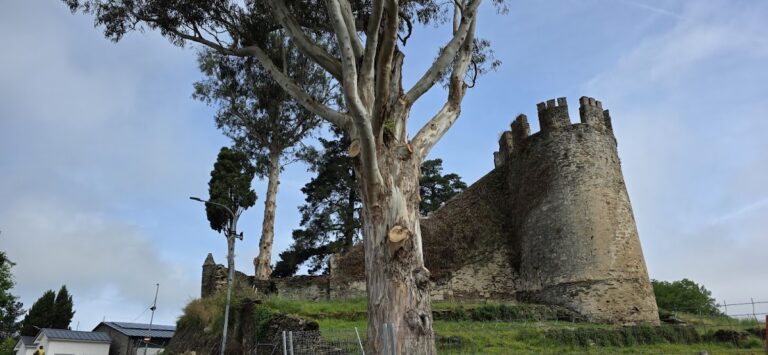Castle of A Peroxa: A Medieval Fortress in Spain
Visitor Information
Google Rating: 4.1
Popularity: Low
Google Maps: View on Google Maps
Country: Spain
Civilization: Unclassified
Remains: Military
History
The Castle of A Peroxa is a medieval fortress situated within the municipality of A Peroxa in Spain. Its origins remain unclear, although some suggest that it was constructed during the early medieval period by the Temes family around the year 793, during the reign of Alfonso II of Asturias. This early fortress likely served defensive purposes, protecting local lands from external threats. A traditional tale associated with the castle tells of its capture by Abd Al-Karim, who allegedly mistreated the local population until the Christian Apostle Santiago intervened, retaking and destroying the stronghold.
From the 13th century onward, the castle came under the ownership of the High Steward (Adiantado-Mor) of Galicia. Starting in 1370, this position was held by Pedro Ruíz Sarmiento, the first Lord of Ribadavia. The castle remained within his lineage, and his descendants were later granted the title of Count of Ribadavia during the rule of the Catholic Monarchs in the late 15th century.
The fifteenth century brought conflict to the castle, as it endured attacks by the Irmandiños, a rebellious group challenging noble authority in Galicia. Throughout its history, the castle and the surrounding town were vassals to the Counts of Ribadavia, who also controlled nearby castles at Maceda and Vilamarín, as well as being linked to the Monastery of Sobrado dos Monxes, emphasizing the complex feudal and ecclesiastical relationships in the region.
In the eighteenth century, the castle was confiscated during the widespread expropriation of noble and church properties, a process known as disentailment. Approximately a century later, around 1920, a private owner dismantled significant parts of the castle’s prominent keep tower and surrounding walls, repurposing the stone materials for construction of the local parish church of A Peroxa. Historically, the castle’s grounds also hosted the traditional “Feira da Peroxa” fair, an event linked closely to the site, once supported by the small vendor stalls visible in nearby archaeological remains.
Remains
The Castle of A Peroxa is constructed entirely from carefully shaped granite blocks, known as ashlar masonry, typical of medieval defensive architecture. Its irregular polygonal layout, leaning towards an elliptical form, follows the contours of the steep hill on which it stands. Four semicircular towers reinforce the fortress’s walls, two of which guard the entrance situated on the northeast side.
Of the towers flanking the main gate, the one on the left preserves a guardhouse area featuring a simple vertical slit designed for archers, sometimes called an arrow slit, allowing defenders to shoot while being protected. The tower on the right side of the gate survives only in foundation traces. Along the curtain wall, parts of the battlement walkway—known in Spanish as the adarve, the narrow path behind crenellations used by defenders—are conserved, giving insight into how soldiers would have moved along the walls.
Within the interior of the enclosure, remains of dividing walls suggest the presence of separate chambers or functional spaces. At the heart of the castle was a tall keep tower, the stronghold’s central defensive structure, whose foundations remain intact and indicate a solid, imposing construction. Close to the outer wall, leaning against it, stands a building with fragments of a barrel-vaulted roof, a type of curved ceiling formed by a continuous arch, though the exact purpose of this structure has not been ascertained.
One notable feature is a large cistern, or aljibe, built at a lower level inside the complex. This water reservoir would have been essential for storing rainwater, ensuring a supply during sieges. Together, these surviving elements demonstrate the castle’s adaptation to the rugged terrain and its role as a well-fortified stronghold during the medieval period. The use of granite ashlar points to skilled craftsmanship, preserved today through recent restoration efforts that have reinforced these ancient stone structures.










